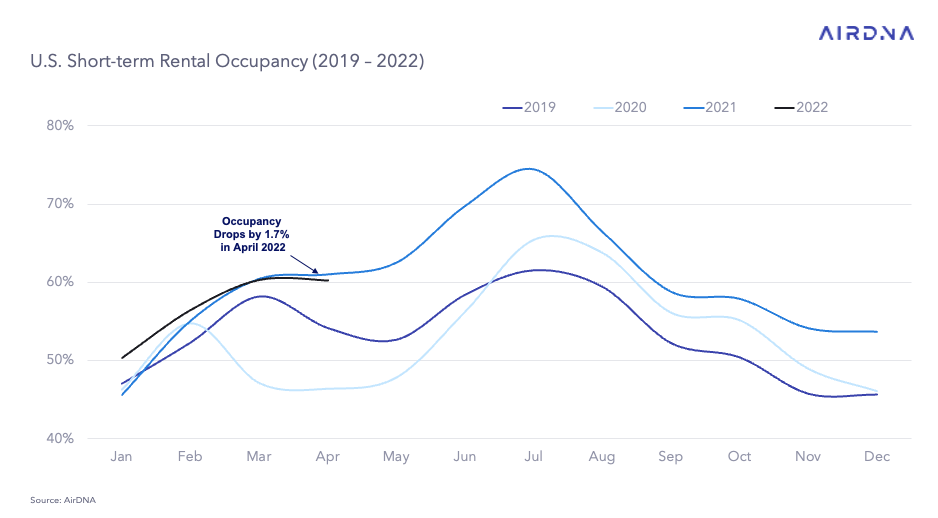It’s a common trend in our industry that the overarching macro news obscures counter trends among niches or segments of the larger picture. While it has been difficult to ignore the tell-tale signs of a red-hot real estate market...

It’s a common trend in our industry that the overarching macro news obscures counter trends among niches or segments of the larger picture. While it has been difficult to ignore the tell-tale signs of a red-hot real estate market during Covid times, there are critical nuances that require interpretation in the Inn and Bed and Breakfast industry.
First off, the Inn, Bed and Breakfast, and boutique iteration of hospitality remains a vibrant segment of the greater hospitality industry. The increasing interest in the market of tech driven hospitality groups is a clear indicator of the opportunity that truly independent properties offer both guests and owners.
At the start of the pandemic, the larger hospitality market was faced with publicized declines in occupancy and average daily room rates. (Hotel and resort properties rely heavily on business meetings and business travel.) The falloff in activity is complicated by a record number of rooms coming online due to expansion planned in a flourishing pre-pandemic world.
Metro area and airport hotels suffered the greatest economic turbulence at the height of Covid, with a veritable tsunami of closures that touched some of the highest-flying brands. The developments of New York and Los Angeles iterations of NoMad were difficult to ignore.
It’s a different story for Inns, B&Bs, and independent properties, in particular those properties in reach of active metro areas. With international travel out of the question consumers sought readily available alternatives. A Tuscan retreat was replaced with an extended trip to the Hudson Valley, Costa Brava became coastal Maine, North Carolina, or California’s Lost Coast. It is clear that the convenience and economy of “drive to” vacations versus “fly to” luxury trips became an undeniable trend over the last two years. For those Inns able to capture and curate experiences desired by weary, pandemic-worn guests, the economic benefit was palpable.
The general report from Inns and B&Bs in 2021 was positive with most well-marketed properties experiencing record income and occupancy. Inns we engage with on a regular basis report booking pace in 2022 that shows continued growth in both occupancy and average daily rates (ADR). One explanation for growth – in addition to the ongoing ‘pent of demand for travel’ – is the virtuous cycle of repeat business that has been a long-term driver of occupancy in our market.
At the same time, millennial travelers seem to have discovered Inns during the pandemic, and many are intrigued, if not enthralled, with a model that speaks to their unrelenting desire for the authentic, the subjective, the unique, the shareable. Of course, peer review sites (Google/TripAdvisor) remain the gateway for guests, ensuring that they are investing in an experience that supports their worldview. Forget ornamental expression and exposition – guests want facts and personal contact with Innkeepers and other likeminded individuals. And when their needs shift in a different direction, they want recognition of that fact. Remember, the majority of good review focus on Innkeepers (and so do the bad ones).

Other factors bode well for Inns and their owners. The focus on romantic travel of yesteryear has given way to interest in activity, adventure, education. Guests want a menu of opportunities that speak to their personal interests and stretch their limits in like kind. Smart Innkeepers are developing packages and marketing experiences, visually and otherwise, that reach beyond roses and champagne and focus on connecting with guests on a personal plane. The time is now for Innkeepers to continually push the bounds, reaching younger demographics while appealing to the needs of all travelers for the new. We all need to talk about what that constitutes – far more than we are today.
All of this points to a very bright future for our segment of the hospitality industry – far brighter than the threadbare prognostications of the greater industry that is just now sharing notes of optimism as travelers “learn to live” with Covid and its related ills.
There remains positive news for both aspiring Innkeepers and those long-term residents of the industry who are looking towards retirement or other ventures. While the Fed will continue to raise interest rates to stave off inflation, they remain at a very bankable level, offering an open window to Buyers who are serious about making the jump into the Innkeeping lifestyle. For Sellers, a lack of inventory of viable Inn business puts emphasis on any property that is well established, well marketed, and defensibly priced.
While the simple answer is that we are operating in a Seller’s market, a benefit of entering and inhabiting our industry is that reason comes into play in even the most fantastical real estate markets. Numbers must be put to perceptions and banks remain the backstop, helping to separate the facts of business lending from the folly of greater market trends.
Whichever side of the fence you are on – and especially if you are straddling the spikes – we are here to provide support and share in the heights and depths of our evolving industry.
Thanks for listening,
Eben Viens
The post State of the Innkeeping Industry appeared first on The B&B Team.









